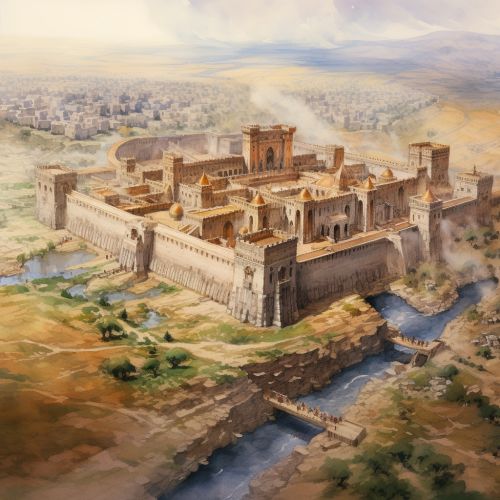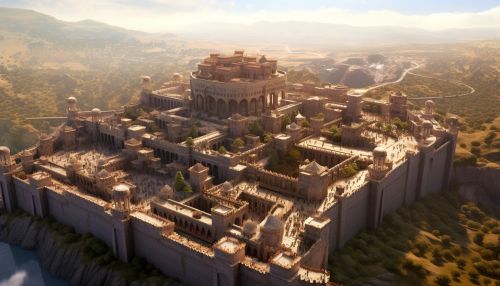Nineveh
History
Nineveh was an ancient Assyrian city on the eastern bank of the Tigris, and the capital of the Neo-Assyrian Empire. It is located in the modern-day city of Mosul, in northern Iraq. The city was the largest in the world for some fifty years until the year 612 BC when, after a bitter period of civil war in Assyria, it was sacked by a coalition of its former subject peoples, the Babylonians, Medes, Persians, Chaldeans, Scythians and Cimmerians.


Geography and Climate
The ruins of Nineveh are surrounded by the remains of a massive stone and mudbrick wall dating from about 700 BC. About 12 km in length, the wall system consisted of an ashlar stone retaining wall about 6 m high surmounted by a mudbrick wall about 10 m high and 15 m wide. The ruins are located on a level part of the plain near the junction of the Tigris and the Khosr Rivers.
Architecture and Infrastructure
The city was known for its well-planned streets and avenues, and the architecture was of a higher standard than that of other ancient cities. At the height of its glory, Nineveh's inner city covered an area of 3 square kilometers, and its outer suburbs 7 square kilometers. The city had elaborate water systems and featured two large parks filled with trees and herbs, brought from the mountains and planted with great care.
Culture and Society
The people of Nineveh were known for their devotion to knowledge and learning. The city housed the famous Library of Ashurbanipal, the oldest surviving royal library in the world, which contained a vast collection of cuneiform tablets from all periods of Mesopotamian history.
Religion
The primary deity of Nineveh was the goddess Ishtar, who was worshipped in the large and beautiful Ishtar Temple. The city was also home to the temple of Nabu, the god of wisdom and writing, as well as the temple of Nergal, the god of war and pestilence.
Decline and Fall
The fall of Nineveh was a pivotal event in the history of the ancient Near East. After a three-month siege, the city fell to the invading forces in 612 BC. The destruction of Nineveh marked the end of the Assyrian Empire, which had dominated the region for centuries.
Archaeological Excavations
The site of Nineveh was first excavated by Sir Austen Henry Layard in the mid-19th century. His work revealed the great palace of Sennacherib, with its many rooms and magnificent sculptures. The site has been excavated numerous times since then, revealing a wealth of information about the Assyrian Empire and its capital city.
